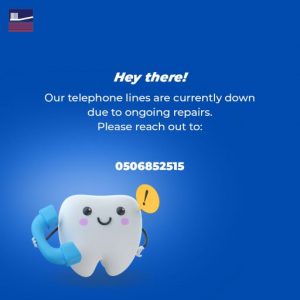
Assuming your dentist or dental hygienist has discovered tooth decay or other damage in your mouth that requires repair. You’re probably wondering what kind of protection your tooth will get once the injury is repaired. While “fillings” are used for tooth repair, other dental restoration alternatives are available. Fillings, crowns, dental inlays, and dental onlays are some examples.
You may wonder what is a dental inlay. What distinguishes it from a dental onlay? And which one will my dentist prescribe for my type of tooth damage? Let’s look at why a dental inlay can be good for you and how it differs from other types of tooth repair.
What is a Dental Inlay?
A dental inlay is a pre-molded filling inserted into your tooth’s grooves. It’s commonly used to repair cavities (or dental decay) concentrated in your tooth rather than along the outer rim or “cusps,” and hasn’t progressed into more extensive dental caries.
Placing dental inlay on your tooth is a painless and easy procedure. Your dentist will use a general anesthetic to anesthetize the affected area of your mouth before drilling into the damaged tooth to remove the decay. After cleaning, your dentist will take an indication of the top crevasses of your molar and forward it to a lab. Dental inlays are made of porcelain or resin composite material that matches your tooth color. They provide virtually invisible dental restoration and are more durable than traditional fillings.
How Inlays Differ from Onlays and Fillings
With what you’ve learned about dental inlays, it’s possible that it sounds appealing! This type of restorative care may be ideal if you have mild dental problems, a rupture, or other dental damage. However, in some cases, dental restoration types are required.
A dental onlay is used to repair a tooth with more severe damage spreading to the outer fringes or biting surface. An inlay is used to fill a hole in your tooth’s grooves, whereas an onlay covers the higher points surrounding the corners of your molar. Getting a dental onlay is similar to getting an inlay. Your dentist will use a general anesthetic to numb the damaged area. They will then dig a hole in your tooth to remove the damaged or decayed tooth material and replace it with a transitional dental onlay. Similar to having an inlay, your dentist will take an indication and forward it to a laboratory. Usually, the permanent onlay arrives a week or later, and your dentist will place it on your tooth.
Dental inlays and onlays are used to repair larger areas of damage. And they have usually considered a better alternative to crowns and fillings.
Benefits of Inlays and Onlays
Stable and Durable – Onlays and inlays are popular because they provide long-term solutions while enhancing your teeth’s functionality. Porcelain is generally used for dental fillings, but composite resin or amalgam is used for inlays and onlays. With proper care, this tough material can solidify a tooth by up to 75% and last 20-30 years.
It is Safe To Use – Bad bacteria will have a hard time reaching the cracks in your teeth because inlays and onlays are attached to your damaged tooth. The adhesive’s strong seal around the affected molar will protect you against further damage. Also, porcelain inlays and onlays adjust size and shape as the temperature changes. And because of their structure, they are a more long-term solution.
Appropriate Results – Inlays and onlays can be used to replace old, worn-out restorative materials. Porcelain perfectly mimics the luster of natural enamel and can be shade-matched to complement in with adjacent teeth. Furthermore, because porcelain is stain-resistant, you can be confident that your restoration will retain its radiance over time.
Quick Procedure – Yes, the process is quick. The procedure takes only one visit. With today’s advanced technology, the procedure can be initiated and completed in a single visit. In a single appointment, you can have a personalized inlay or an onlay constructed. It leads to a more efficient, practical solution and less time spent in the dental clinic. Because inlays and onlays do not require additional recovery time, you can leave the dentist’s office with repaired dental function.
Simple At-Home Treatment Options – Inlays and onlays demand the same regular at-home care as natural teeth. Brush and floss your teeth daily and schedule semiannual dental exams to ensure your restoration is safe and secure. If your inlay or onlay becomes bothersome, loose, crevasses, or falls out, contact your dentist right away to schedule an appointment.





